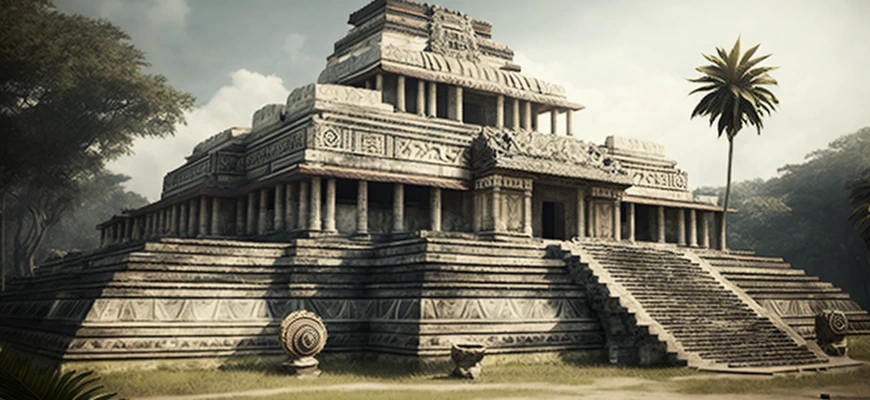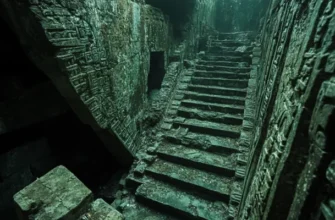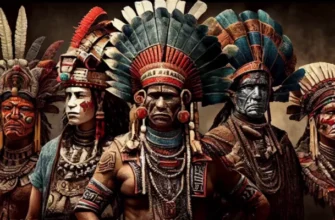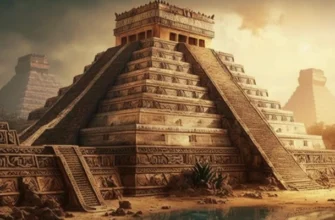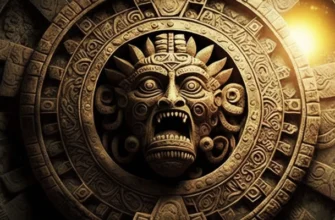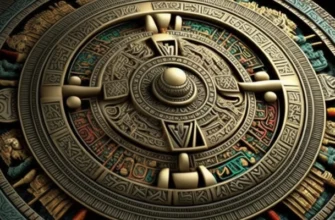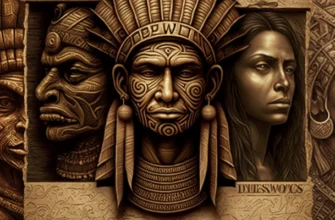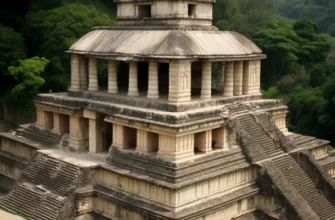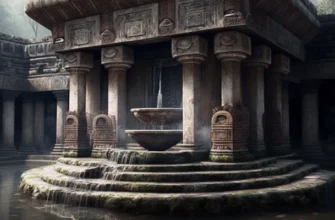The Mayan civilization of the Classic period, which existed from 250 to 900 AD in what is now Mexico, Belize, Guatemala, and Honduras, is one of the most significant ancient civilizations. The Maya developed a complex culture, practiced architecture, mathematics, astronomy, and technology. They had an advanced writing system that allowed them to store information about their calendar, history, religion, and science. The reasons for the Maya’s decline are not yet fully understood, but research suggests that environmental, social, and political factors may have been responsible.
- Historical context
- Characteristics of the Classic Maya civilization
- Culture and art
- Religion
- Science and technology
- Architecture and infrastructure
- Social structure and politics
- Achievements of the Classic Maya
- Writing system and calendar
- Agriculture and trade
- Mathematics and astronomy
- Reasons for the decline of the Classic Maya
Historical context
The Classic Maya (250-900 AD) developed in Mesoamerica (modern Mexico, Belize, Guatemala, and Honduras). This period was marked by population growth, urban development and trade, as well as the flourishing of culture and science. The Maya created a sophisticated writing system and developed an accurate calendar, which allowed them to preserve their history and cultural heritage. During the Classic period, the Maya were known for their great pyramids, stone chambers, and trade routes. Although the exact reasons for their decline remain a mystery, the Maya left a significant impact on world culture and science.
Characteristics of the Classic Maya civilization
The Classic Maya were a complex civilization with a developed culture, scientific achievements, and religious beliefs. Some characteristics of this civilization:
Culture and art: The Maya created a large number of artistic works such as murals, reliefs, and sculptures that reflected their history, religious beliefs, and daily life.
Religion: The Maya believed in a multitude of deities, each responsible for certain aspects of life. They practiced sacrifices and believed in the afterlife.
Science and technology: The Maya developed an accurate calendar, used a writing system, and made ceramics, textiles, and other things. They also understood astronomy and mathematics.
Architecture and infrastructure: The Maya built large pyramids, palaces, and other buildings from stone, wood, and other materials. They also had an extensive network of roads and trade routes.
Social structure and politics: The Maya had a hierarchical social structure, with complex relationships between the elite and the common people.
These characteristics make the Classic Maya one of the most prominent ancient civilizations.
Culture and art
The culture and art of the Classic Maya were extremely developed and are of great importance to the modern history and culture of Mexico and Central America. Some characteristics of Mayan culture and art of the Classic period:
Architecture: The Maya built majestic pyramids, palaces, city squares, and structures for religious ceremonies. Many of these buildings are impressive in their size, detail, and complexity.
Sculpture: The Maya produced many sculptures, including reliefs and statues, which were decorated with patterns and hieroglyphics. Most of these sculptures depicted people, gods, and animals.
Paintings: The Maya created murals and frescoes that depicted the life and religious beliefs of this civilization. Many of these paintings have bright colors and complex compositions.
Music: The Maya had a rich musical source that included wind and percussion instruments. Music was an important part of religious and cultural ceremonies.
Writing: The Maya had their own writing system, which consisted of hieroglyphics. They used this writing system to write their histories, religious and scientific research.
The Mayan culture and art of the Classic period was extremely diverse and sophisticated, and made a great contribution to world culture and art.
Religion
Religion was an extremely important component of Classic Mayan life. They believed in many-headed gods, each associated with a particular aspect of life, such as war, agriculture, or craftsmanship. In addition, the Maya had an elaborate system of religious rites and sacrifices to ask the gods for blessings and protection from disaster.
One of the most famous Mayan religious sites, the Pyramid of Kukulkan, is located in the city of Chichen Itza in southern Mexico. It was built in such a way that the light of the sun created the illusion of the Kukulkan star falling down the pyramid’s steps during the spring and autumn equinoxes, symbolizing the turning of the seasons and the rebirth of life.
In addition, the Maya had a developed cosmological system based on the star calendar. The Mayan religion of the Classic period is of great importance for understanding the culture and history of this ancient civilization.
Science and technology
The Classic Maya were a very advanced civilization that had a significant impact on the science and technology of the time. They had knowledge of astronomy and mathematics, which they used to create an accurate calendar. The Maya are also known for their achievements in architecture and engineering. They built huge pyramids, palaces, and other buildings using a complex system of geometric calculations and a drainage technology that was different from other cultures.
The Maya were also familiar with the production of glass, which was used to create jewelry and other objects. They also grew cotton and other plants for the production of textiles. In the field of medicine, the Maya used a variety of herbs and medicines to treat various diseases, and performed tooth extraction and other procedures.
In general, Mayan science and technology of the Classic period were quite advanced for their time, and their achievements in many fields have survived to this day and are the object of research for scientists and historians.
Architecture and infrastructure
The architecture and infrastructure of the Mayan civilization of the classical period are striking in their complexity and grandeur. One of the most famous structures is the pyramids, which were the center of Mayan cultural and religious life. The pyramids were built of stone and drawings on the walls that reflected various aspects of Mayan life.
In addition to the pyramids, the Maya also built many palaces, city squares, and other structures. The buildings were arranged in such a way as to create a complex system of streets and alleys that allowed easy movement between different parts of the city.
The Maya were also known for their water supply and sanitation system, which allowed them to collect rainwater and redirect it to provide drinking water and irrigate fields. They also created an intricate network of paths and roads that connected different parts of their civilization and allowed for movement throughout the region.
Overall, the architecture and infrastructure of the Classic Maya civilization was quite advanced and innovative for its time, and is still a subject of study and fascination for many people today.
Social structure and politics
The social structure of the Classic Maya civilization was hierarchical. At the highest level were the rulers who were at the center of political and religious power. Below them were representatives of the military and civilian elite who served in various positions in the state.
The lowest level included ordinary citizens who were engaged in agriculture, crafts, and trade. The lowest level was made up of slaves who worked in the field and on construction sites.
The management of the Maya civilization of the Classic period was organized at the level of city-states, which were the administrative centers of the region. Each city-state had its own ruler who led the army, conducted religious ceremonies, and solved common problems. The city-states also had their own laws governing social life and economic activity.
In general, the social structure and politics of the Maya civilization of the Classic period were quite complex and advanced for their time. Despite its hierarchical nature, it allowed people to engage in various activities and cooperate to achieve common goals.
Achievements of the Classic Maya
The Maya civilization of the Classic period made significant achievements in various fields. Mayan achievements include:
Mathematics and astronomy: The Maya developed their own number system that used the numbers 0 to 19 and was based on the use of positions. They also developed precise calendars that allowed them to keep track of time and perform various rituals.
Writing: The Maya invented their own written sign system known as glyphs, which were used to record various language systems, including their own language, Maya.
Architecture: The Maya built a large number of complex structures, such as temples, palaces and pyramids, which are striking in their beauty and precision.
Art: The Maya produced beautiful ceramic products that demonstrate a high level of craftsmanship and cultural development.
Agriculture: The Maya were quite successful farmers and developed an irrigation system that allowed them to farm in different regions and achieve high yields.
These achievements demonstrate the high level of development of the Maya civilization of the Classic period and influenced the further development of science and culture in the region.
Writing system and calendar
The Maya writing system of the Classic period is known as glyphs. This system consisted of more than 800 hieroglyphs that were used to record various language systems, including their own language, the Maya.
In addition, the Maya developed two calendars: a ceremonial calendar and a solar calendar. The ceremonial calendar, known as Tzolkin, consisted of 260 days and was used for religious and ceremonial events. The solar calendar, known as the Haab, consisted of 365 days and was used for agriculture and everyday needs.
The Maya also developed a long calendar, which was used to predict distant events and allowed them to track time thousands of years in advance. The long calendar consisted of three cycles: Baktun, Katun, and Tun, which covered 144,000 days, 7,200 days, and 360 days, respectively.
These calendars and the Mayan writing system reflect the high level of scientific and cultural development in this civilization.
Agriculture and trade
Agriculture was the main branch of the Mayan economy during the Classic period. They used artificial fields to cultivate land and irrigate crops such as corn, beans, pumpkins, and coffee trees. The Maya also engaged in cattle ranching and fishing.
Trade played an important role in Mayan life. They traded with other peoples for items that could not be produced on their territory, such as gold, pearls, dresses, cocoa butter, and resin. In addition to trade, the Maya also practiced crafts such as ceramics, stone carving, weaving, and goldsmithing.
The Maya used special trade routes and ports to exchange goods. They also used currency in the form of ceremonial tools such as stone knives and sticks, as well as foods such as cocoa and tequila. Interaction with other cultures fostered cultural exchange and the development of art and science.
Mathematics and astronomy
Mathematics and astronomy were very important to the Maya of the Classic period. They used a complex number system that included numbers from 0 to 19, as well as a symbol for zero. With this system, they performed complex mathematical operations, including calculating the calendar, measuring time and weight.
The Maya were also quite advanced in astronomy. They used astronomical knowledge to calculate the calendar, predict the weather, and plan agricultural work. They created accurate celestial calendars and knew about the movement of the planets and stars.
The Maya were also known for their astronomical observations and the creation of space maps. They studied the movements of the Sun and Moon and created a detailed map of the starry sky, which allowed them to accurately determine the positions of the planets. The Maya were the first to record Venus as a “morning” and “evening” star, and they understood that the planet’s movement was linked to climate change.
Reasons for the decline of the Classic Maya
The decline of the Classic Maya was a complex process and its causes cannot be explained. The main theories of the decline include:
Environmental degradation: The intensive exploitation of land and water resources led to a decline in soil fertility and a decline in crops. This may be due to climate change and natural disasters.
Political conflicts: The Maya had a complex political structure with many independent local authorities, which often led to conflicts and wars between them.
Epidemics and diseases: According to some studies, disease and epidemics may be one of the reasons for the Maya’s decline.
Changes in trade: Trade was an important source of income for the Maya, but changes in trade routes and competition with other cultures could have led to economic hardship.
Social instability: Changing power and social structures may be one of the reasons for the Maya’s decline.
Religious changes: Changes in religious beliefs and practices may be linked to the Maya’s decline, but this theory is less well established.
The interaction of various factors may have led to the decline of the Classic Maya, but the specific causes remain a subject of research and debate among scholars.
